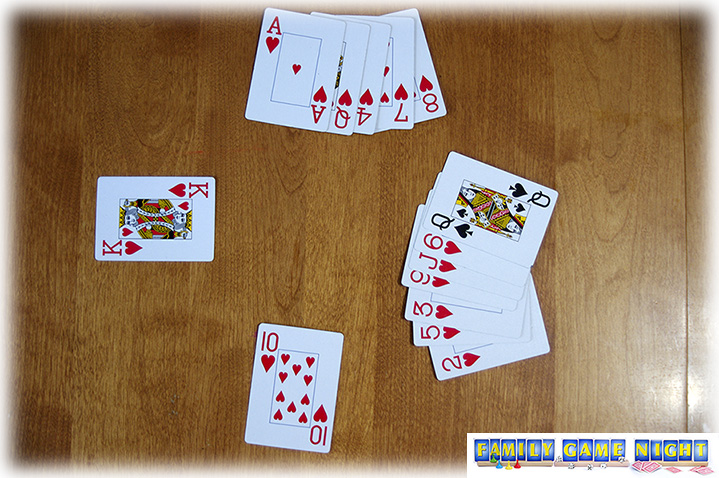Card games have woven themselves into the very fabric of human experience across generations. They have kept quiet company on rainy days and fueled laughter into the late hours of the night, forming an immutable bridge between eras. Among classics of pastimes past and present, Hearts retains a uniquely steadfast place, balancing simplicity with cunningness, familiarity with endless surprises, and offering the right intermingling of happenstance, strategy, and psychological maneuvering.
This article explores why Hearts continues to enchant players worldwide, how its roots took hold and branched out over time, what sets it apart from other card legends, and why families and friends remain eternally drawn to it despite innumerable digital diversions.
A Past and Tradition Steeped in History
Like many games of cards, Hearts’ genesis remains somewhat obscured by the shroud of time passed. Most scholars trace its lineage to the 18th century, emerging from an earlier European game called “Reversis.” This precursor first contained the notion of avoiding certain penalty cards, an idea that blossomed into Hearts’ central mechanic: sidestepping unwanted points.
By the 19th century, Hearts had crossed the great Atlantic and firmly planted its roots in America’s fertile soil. Early versions were played in parlors, aboard vessels crossing vast oceans, and at social gatherings, enjoyed by everyday families and the highest echelons of society alike. Such was its contagious popularity that by the early 20th century, myriad variations had sprouted, including “Black Maria” across the channel in Britain and “Black Lady” on American shores, where the dreaded Queen of Spades carried an especially punishing weight.
The Rules in a Nutshell
Part of Hearts’ longevity lies in its accessibility. The straightforward rules allow beginners to grasp the gameplay within minutes, but nuanced layers of strategy keep even veterans enthralled.
Hearts is commonly contested among four, using a standard fifty-two card deck. The aim is to avoid accumulating hearts and, most critically, the Queen of Spades each heart awards a solitary penalty point while the Queen demands a substantial thirteen. Victory goes to whomever possesses the lowest score after a player reaches a predetermined threshold, often one hundred points.
The dealing divides the cards evenly and competitors may start by conveying three cards to an opponent (a ritual that injects intrigue and mischievousness). Afterwards, one plays following suit, with the highest card of the led suit earning the trick. The suspense lies in choosing when to shed dangerous cards and when to sacrifice points strategically.
One of the most thrilling aspects of this card game is the daring maneuver known as “shooting the moon.” If a player succeeds in collecting all the penalty cards in a round, instead of punishment they inflict twenty-six points on their adversaries. It’s a high-risk, high-reward gambit that electrifies the table and can fully shift the momentum of the match.
Strategy Meets Psychology
While Hearts is fundamentally simple to grasp, mastery comes from a delicate dance of strategy, foresight, and psychology. Unlike purely chance-based games, Hearts demands that players read their opponents, manage risks, and anticipate future plays.
Card Passing
The initial distribution of three cards to each player sets the tone for what is to come in an intriguing round of strategic decisions and chance. Should you wisely part with high spades to avert a dreaded Queen? Or secretly slide perilous picks to a participant you wish to best?
Recollection and Tracking
Achievement regularly stems from recollecting which suits have surfaced and anticipating who could be carrying the treacherous Queen of Spades.
Deceit and Misdirection
Comparable to poker, a piece of the pleasure of Hearts lies in subtle deception appearing innocuously, pretending weakness, or baiting others into playing their risky cards.
Risk Tolerance
Scarcely any moments in gaming are as stimulating as deciding whether to dare shooting the moon. It necessitates self-assurance, cunningness, and the ability to keep adversaries in the dark until it’s too late to change course.
This balance between aptitude and happenstance makes the hearts card game perpetually replayable. A solitary session can be overflowing with laughter, aggravation, triumph, and unanticipated reversals of destiny.
Why Hearts Endures
Thus why has this centuries-old pastime maintained its grip on our imaginations when so many other games have faded? Several factors explain its timeless appeal:
Universal Accessibility
Unlike niche games that necessitate specialized equipment or lengthy explanations, Hearts merely needs a deck of cards and a willingness to play. Its regulations are simple enough for children yet profound enough to hold adults’ attention.
Balance of Skill and Luck
Too much luck makes a game feel shallow, while too much reliance on skill can intimidate casual players. Hearts walks the tightrope flawlessly. A fortunate deal can help a novice, but seasoned players have enough influence to steer the outcome.
Social Bonding
The hearts card game is inherently social, fostering both friendly competition and camaraderie amongst players. It sparks lively debates, spurts of laughter, and memories shared across generations. Families often pass down their fondness for this activity, playing for hours on festive gatherings precisely because it brings both rival clans and solitary souls together in merriment.
Ever-Changing Variations
Over decades, unique house rules and peculiar traditions have branched off throughout communities. Some tight-knit groups adjust the scoring thresholds to ruthless levels; others delight in alternating card distributions or devising sadistic penalties for fallen friends. This flexibility ensures the diversion never dulls, reinventing itself irrespective of time.
Digital Metamorphosis
In the late 90s, Hearts was astonishingly resurrected in Microsoft Windows, introducing the pastime to new legions. Online realms and pocket devices have since globalized the game, connecting rivals across borders to duel in leisure or strife. AI opponents were also engineered, giving solo players life-like challenges.
Hearts in Culture
Interestingly, Hearts has infiltrated cultural literature, employed as symbolic shorthand. Novelists referenced its risks, tricks, and emotional snares metaphorically. Terms like “broken hearts” or “lunar triumph” still conjure dramatic scenes in poetry and prose today.
In mass media, it frequently surfaces depicting familial bonds, college dorms, and retirement, cementing its multi-generational stronghold. Unlike high-risk poker or flashy novelties, Hearts endures with a gentle notoriety competitive but not cutthroat, clever yet not cerebral.
Playing Hearts in the Digital Age
While the real-time ritual around the dining table remains matchless, online platforms have reinvigorated worldwide interest. Digital versions often include tutorials for tyros, adaptable regulations, and global leaderboards where competitive spirits test mettle against international opponents.
Mobile applications provide rapid matches on the go, while web-based games unite gamers from different corners of Planet Earth. Interestingly, the rise of online Hearts has even introduced the game to more youthful eras who might never have encountered it otherwise.
The digital change also underscores one of the game’s persevering strengths: adaptability. Whilst rooted in centuries of tradition, Hearts effortlessly shifts into new formats, proving its resilience and relevancy.
Life Lessons from Hearts
Beyond mere entertainment, the hearts card game offers instructions relevant to life. It teaches patience, strategic thinking, and the ability to cope with setbacks. Occasionally, regardless of your best planning, you’re dealt a poor hand how you deal with it matters more than the outcome. Other times, bold risks pay off spectacularly, echoing life’s occasional rewards for courage.
For families, it becomes more than a game; it’s a tool for teaching children about sportsmanship, decision-making, and resiliency. For adults, it provides both relaxation and mental stimulation, offering a break from the grind of everyday routines.
Why Hearts Remains Applicable Today
In an era dominated by hyper-realistic video games, short-form entertainment, and algorithm-driven feeds, one might presume a centuries-old card game would feel obsolete. Yet, paradoxically, it is precisely the simplicity of Hearts that makes it refreshing.
It requires no electricity (unless you’re playing digitally), no complex rulebook, and no expensive setup. It offers an authentic, face-to-face human experience, where laughter, groans, and the sly glance of a well-played card matter more than pixels or points on a leaderboard.
As people increasingly seek moments of connection and mindful play, the hearts card game feels not only relevant but necessary a reminder of the timeless joy of gathering around a table and sharing an experience.
Conclusion
The hearty card game of Hearts has persevered through centuries owing to its rare fusion: facile to fathom yet impossible to bore of, competitive yet communal, timeless yet mutable. From its European roots to its digital reincarnation, it has evidenced its staying power across generations and technologies.
At its core, Hearts is about more than circumventing points or shooting the moon. It is about the thrill of strategizing, the warmth of fellowship, and the enduring power of basic, shared diversion. Whether sorted from a worn deck on a wooden table or clicked into place on a luminous screen, Hearts continues to gather families and friends together in laughter, rivalry, and timeless fun.




